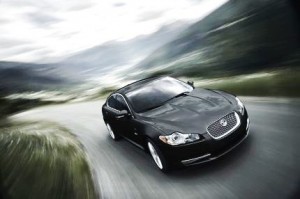
Jaguar, with models like the XF sedan, has done the best job of satisfying customers at the showroom, according to the J.D. Power Sales Satisfaction Index.
While the movies live by the lore of the sleazy car salesman, ready to do or say anything to close a deal, the reality has changed dramatically, in recent years. Overall satisfaction with the new-vehicle purchase process has improved dramatically, according to a new survey, though problems persist – and are serious enough to send one in eight buyers off to the competition.
One of the most notable improvements is that salespeople are working to help customers stay within their budgets and wrap up negotiations quickly, according to the latest annual Sales Satisfaction Index, or SSI, from J.D. Power and Associates. The latest annual study also shows that dealers are doing a better job explaining vehicle features and the basics of the owner’s manual.
“In this difficult economy, dealerships are working particularly hard to close sales, but need to be attentive to customers without exerting unwanted sales pressure,” said Jon Osborn, director of automotive research at J.D. Power and Associates. “Nearly one in four buyers in 2009 reports experiencing sales pressure from their selling dealer.”
Overall satisfaction, measured in five categories — dealership facility; salesperson; paperwork/finance process; delivery process; and vehicle price – soared to 836 on a 1,000-point scale in 2009. That’s up 11 points from the year before, according to Power. Notably, the biggest improvements occurred, according to Power, in the two areas most within the dealership’s control: the salesperson and the delivery process.
Despite the overall improvement in satisfaction, the study finds that one in five buyers will leave a dealership without purchasing a vehicle because they either felt mistreated by the dealer or were disappointed by such things as sales pressure tactics or feeling gamed on pricing. While many of those frustrated shoppers will go to another dealer and buy the same vehicle they were originally looking at, about one in eight shoppers ultimately shift to a different brand because of poor dealer treatment.
“With the billions of dollars that automakers spend designing, producing and marketing new vehicles, as well as in driving customers to showrooms, it is critical that potential buyers are not pushed out the dealer’s door because of a poor customer experience,” said Osborn.
Out of 38 brands included in the 2009 Power SSI, 29 showed improvement compared to the year before. Detroit makers scored particularly well in the study.
Mercury was the top-performing mass market brands, improving its score in all five SSI categories. Significantly, Buick, Pontiac and Chevrolet came in third, fourth and fifth, respectively, and every one of the Ford and General Motors divisions ranked above industry average.
As the company worked through its bankruptcy, improving sales satisfaction was “one of our key priorities,” said Susan Docherty, GM’s new director of Sales, Service and Marketing. She notes that customer treatment was a major part of the selection process used to choose which buyers were retained and which were cut. “We picked the best and the brightest dealers, who know how to satisfy customers,” stressed Docherty, adding that a good product sold by a bad dealers is “wasted.”
The Japanese were shut out of the SSI’s mainstream top five, which included only smart among the import brands.
However, the picture was a bit different in the luxury category, where Jaguar topped all competitors for the second year in a row. The top five were rounded out by Cadillac, Lexus, Mercedes-Benz, and Land Rover.
Mini was the most improved of the 38 brands included in the 2009 SSI, jumping up 16 spots, to rank sixth.
The 2009 SSI reveals several key trends in the market. On average, the typical buyer visits three different showrooms during the buying process, but nearly half will visit only one dealer, a significant show of loyalty. That makes it especially important that dealers make sure they treat each customer well.
Customers satisfied by the first dealer they visit are generally less likely to shop around.
The SSI is based on surveys conducted between August and October 2009, and the results involve 48,000 buyers who purchased a 2009 model car, truck or crossover in May or June of this year.
